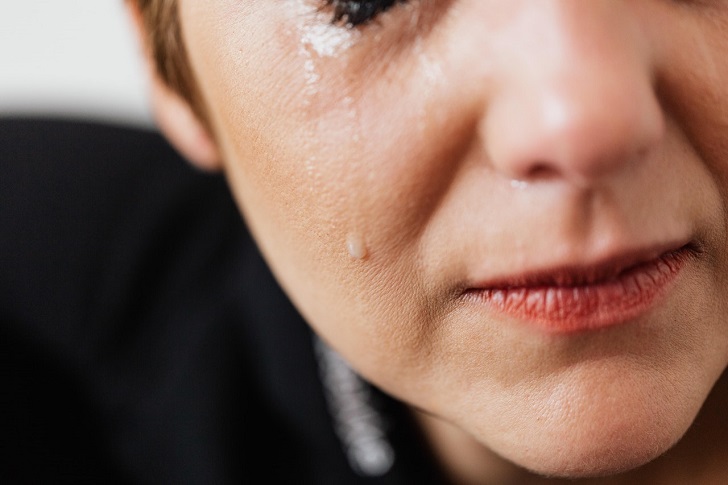
Crying: The Benefits on Mental Health

In a world that often champions stoicism and emotional restraint, shedding tears is sometimes dismissed as a sign of vulnerability. However, science and psychology are shedding light on the deep-rooted benefits of crying, particularly regarding mental health.
Far from a sign of weakness, tears serve as a natural and powerful outlet for emotional well-being, offering profound advantages for our psychological equilibrium.
The Physiology of Tears
Tears are not solely born from sadness or distress; they encompass a spectrum of emotions, from joy and frustration to relief and grief. Scientists have identified three primary types of tears: basal tears, which lubricate and protect the eye; reflex tears, triggered by irritants like chopping onions; and emotional tears, which spring from feelings and emotions.

Karolina Grabowska/ Pexels | Tears are not all the same
When emotional tears are shed, they contain higher levels of stress hormones, suggesting that crying serves as a physiological release mechanism. This natural expulsion of stress hormones through tears is a safety valve for our psychological well-being.
Stress Reduction and Mood Elevation
One of the most notable benefits of crying is its capacity to reduce stress and elevate mood. Emotional tears contain elevated levels of adrenocorticotropic hormone (ACTH) released during stress. Crying allows the body to purge excess stress hormones, leading to a sense of relief and relaxation.
Furthermore, the neurotransmitter called oxytocin, often called the “love hormone,” is also released during crying. Oxytocin is associated with bonding, social connection, and stress mitigation. Its presence in tears offers a biological explanation for the comfort and solace that often follows a good cry.

Fox/ Pexels | Tears are not only associated with sadness; they can also be tears of joy
Catharsis and Emotional Cleansing
Crying is often described as a form of catharsis, a psychological release that enables us to process and come to terms with our emotions. When we cry, we are essentially allowing ourselves to confront and navigate the complexities of our feelings, which can be remarkably therapeutic.
Suppressing emotions, on the other hand, can lead to emotional stagnation and internal turmoil. Crying acts as a means of cleansing, purging pent-up feelings, and allowing us to move forward with a clearer perspective.
Building Resilience and Coping
Crying is not a sign of fragility; it is a testament to our resilience and capacity to cope with life’s challenges. It takes courage to acknowledge our emotions and allow ourselves to feel vulnerable; this act of vulnerability is a powerful tool for growth.

Jack Sparrow/ Pexels | Throughout history, tears have been a subject of artistic exploration.
When we cry, we acknowledge our humanity and embrace our emotional spectrum. This self-compassion contributes to developing emotional intelligence and resilience, enabling us to navigate future challenges with a more adaptable and open mindset.
Enhancing Interpersonal Connections
Tears have a unique ability to foster connections between individuals. Our natural empathetic response is triggered when we witness someone’s tears. This shared emotional experience strengthens our bonds with others and encourages a sense of understanding and support.
Sharing our tears with loved ones can deepen relationships, communicating trust and authenticity. It invites others to reciprocate vulnerability, creating an environment of mutual emotional support and acceptance.
More in Mental Health
-
`
Hair & Makeup Designer Sarah Rubano Talks Turning Mia Goth Into Pearl
Transforming an actor into an unrecognizable character is no small feat, and Mia Goth’s Pearl makeup in the hit movie “Pearl”...
December 17, 2024 -
`
The Physical Signs of Hunger and How Mindful Eating Makes a Difference
Hunger is one of the most basic yet essential signals our body uses to communicate its need for energy. However, many...
December 15, 2024 -
`
Why Did Chris Pratt Call Anna Faris Before Proposing to Katherine?
Chris Pratt, the beloved star of “Guardians of the Galaxy,” made headlines when he revealed that he called his ex-wife, Anna...
December 3, 2024 -
`
6 Proven Tips to Tackle Insurance Claim Denials Successfully
Claim denials are a common hurdle for healthcare providers and professionals, even for those who follow the necessary procedures to avoid...
December 1, 2024 -
`
5 ‘Bad’ Fitness TikTok Trends You Shouldn’t Follow
TikTok has become a haven for creative fitness advice. But not all trends are worth your time or your health. From...
November 23, 2024 -
`
Does Drinking Water Affect Adrenal Hormones?
Drinking water is often seen as a simple way to stay hydrated, but it has deeper effects on our body than...
November 14, 2024 -
`
Why We Feel the Loss of Celebrities So Deeply?
Celebrity grief might sound strange at first. After all, most of us have never met these famous figures in person, yet...
November 5, 2024 -
`
Are High Deductible Insurance Plans as Ideal as They Appear to Be?
High deductible insurance plans have been a hot topic for years, especially as healthcare costs continue to rise. For many Americans,...
October 31, 2024 -
`
How Training Load Data Can Transform Your Exercise Routine
Tracking progress during workouts is challenging. Simple metrics like mileage or time don’t show the whole picture. Understanding the overall effort...
October 26, 2024















You must be logged in to post a comment Login